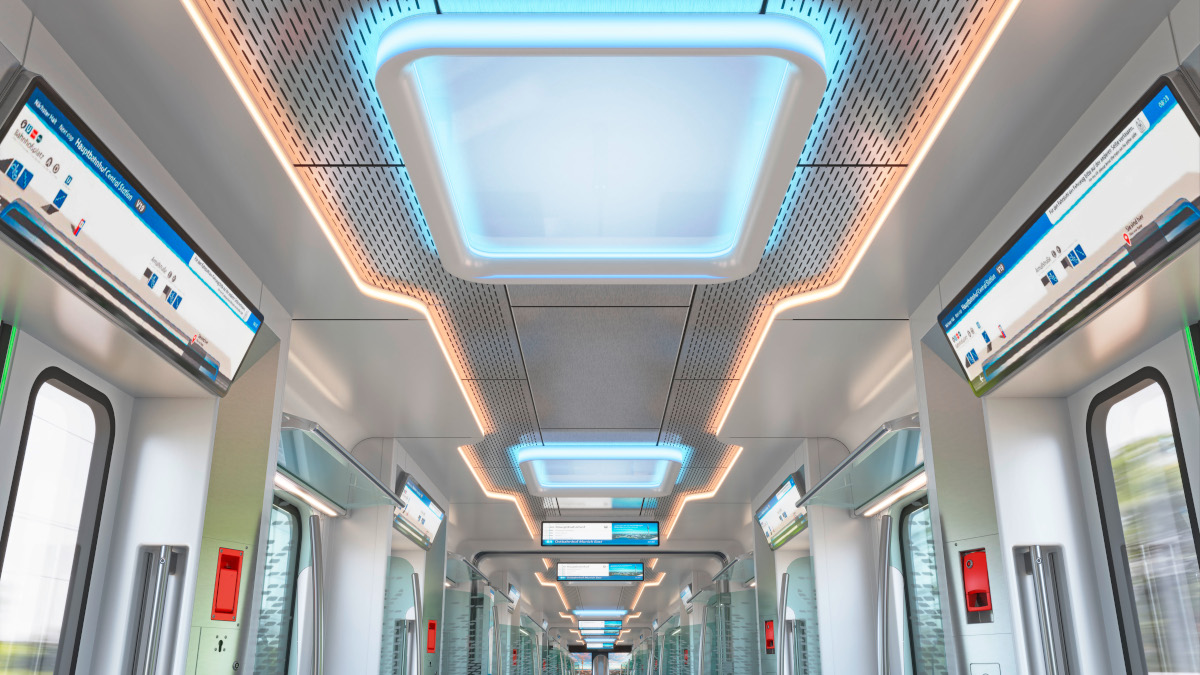
Upgraded Munich Commuter Rail Lines To Get Some 15,000 Screens
August 3, 2023 by Dave Haynes
German language content partner invidis is reporting today how the commuter trains in its home city of Munich will be upgraded in roughly five years with scores of stretched LCD displays and two-by-two video walls. The new S-Bahn trains, made by Siemens, are scheduled to go into service with passengers from the end of 2028.
Reports invidis:
For the first time in Germany, fully integrated S-Bahn vehicles with a length of more than 200 meters (the same length as an ICE). They offer space for 1,841 passengers. The trains consume particularly little energy, require little maintenance and receive software updates online via the cloud.
The passenger information is completely new: There are 166 stretched displays per train inside and outside above the doors, on the ceiling and in the transitions between the cars. They provide information about the course of the journey, the stations and the occupancy of the respective train. Before exiting, the displays show where there are stairs or elevators on the next platform. On the outside of the train, LED strips light up in the respective color of the line. Similar to the previous contract, Ströer will also be responsible for the DooH marketing of the displays in the new Munich S-Bahn trains.
The two 2×2 digital signage video walls at the two ends of the train are particularly striking. So far, nothing has been announced about the content usage concept. Passengers with hearing aids can connect to the information system via Bluetooth and thus better understand the announcements on the train.
Background: passenger information
- On the outside of the vehicles there is a lateral LED strip in the respective color of the line. So you can see immediately at the stations which line it is.
- Announcements can be made to suit the situation in selected parts of the train.
- There are a total of 166 displays for comprehensive real-time passenger information:
- 104 displays in the interior above the doors, on the ceiling, in the gangways and on the rear walls of the two driver’s cabs. Among other things, they provide information about the next station, the course of the journey, current disruptions and offer space for passenger TV.
- 62 external displays above the doors provide information about route, destination and intermediate stops. Thanks to the high resolution, additional information, such as capacity utilization or locked doors, can also be displayed flexibly.
- Four large display walls on the backs of the driver’s cabs
- Above-the-door displays provide individual orientation about the platform at the next station. This makes it immediately clear whether, for example, the elevator or access to the subway is to the left or right of the door when exiting.
If you have flown in or out of Munich, those are S-Bahn trains that take people to and from the airport into central Munich. Those “bar-type” stretched displays are just about perfect for passenger rail cars, slim enough to fit the space over windows or suspend from car ceilings without forcing riders to duck. It’s technology that’s been around for at least a decade (probably longer) but they’ve become much more feasible and reliable since manufacturers started producing them in these “native” shapes – versus the earlier versions that were 16:9 displays that were cut in half horizontally and then remanufactured.



Leave a comment